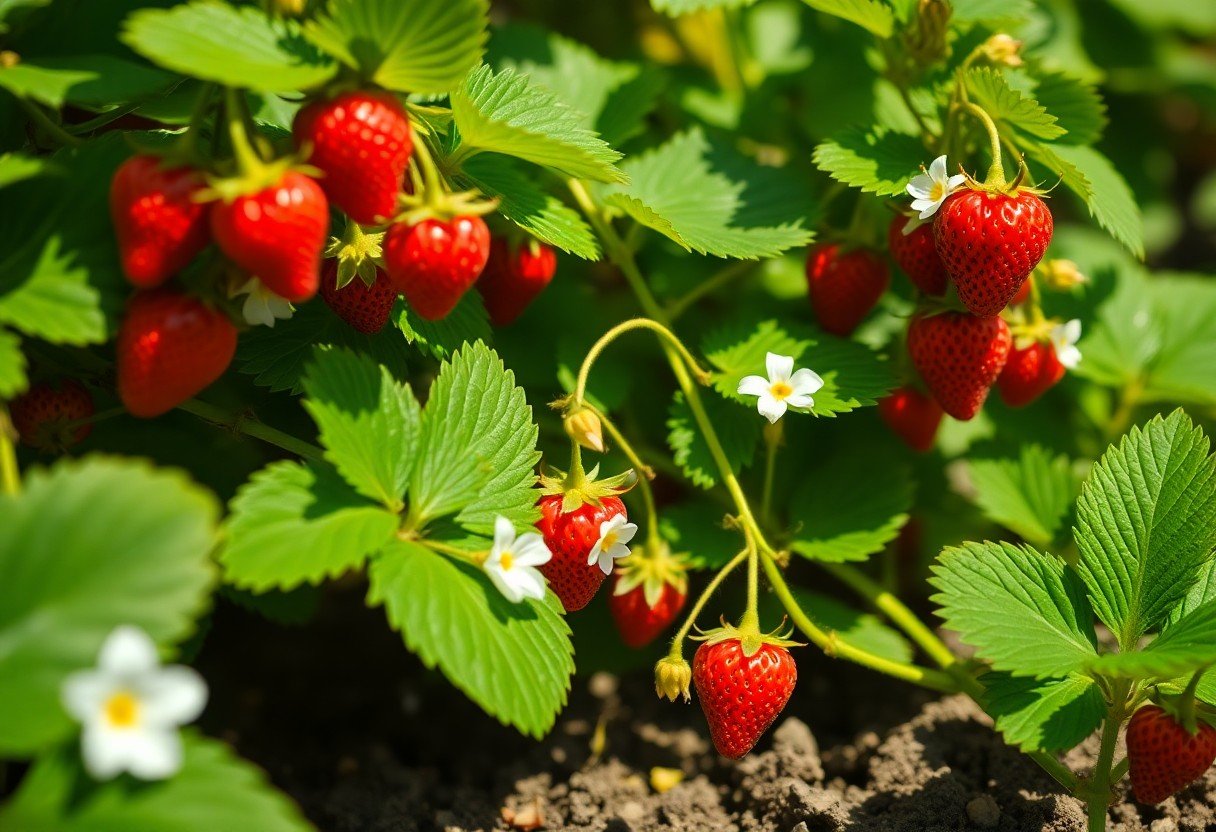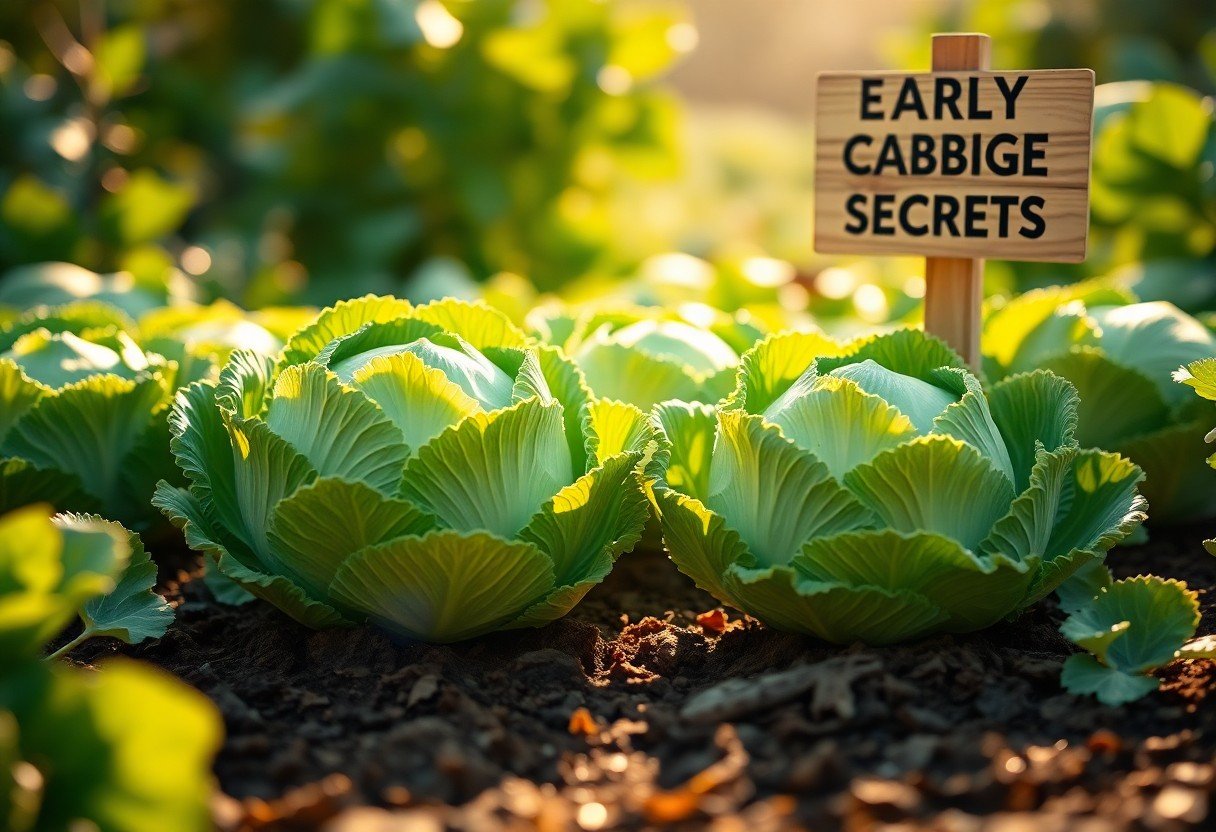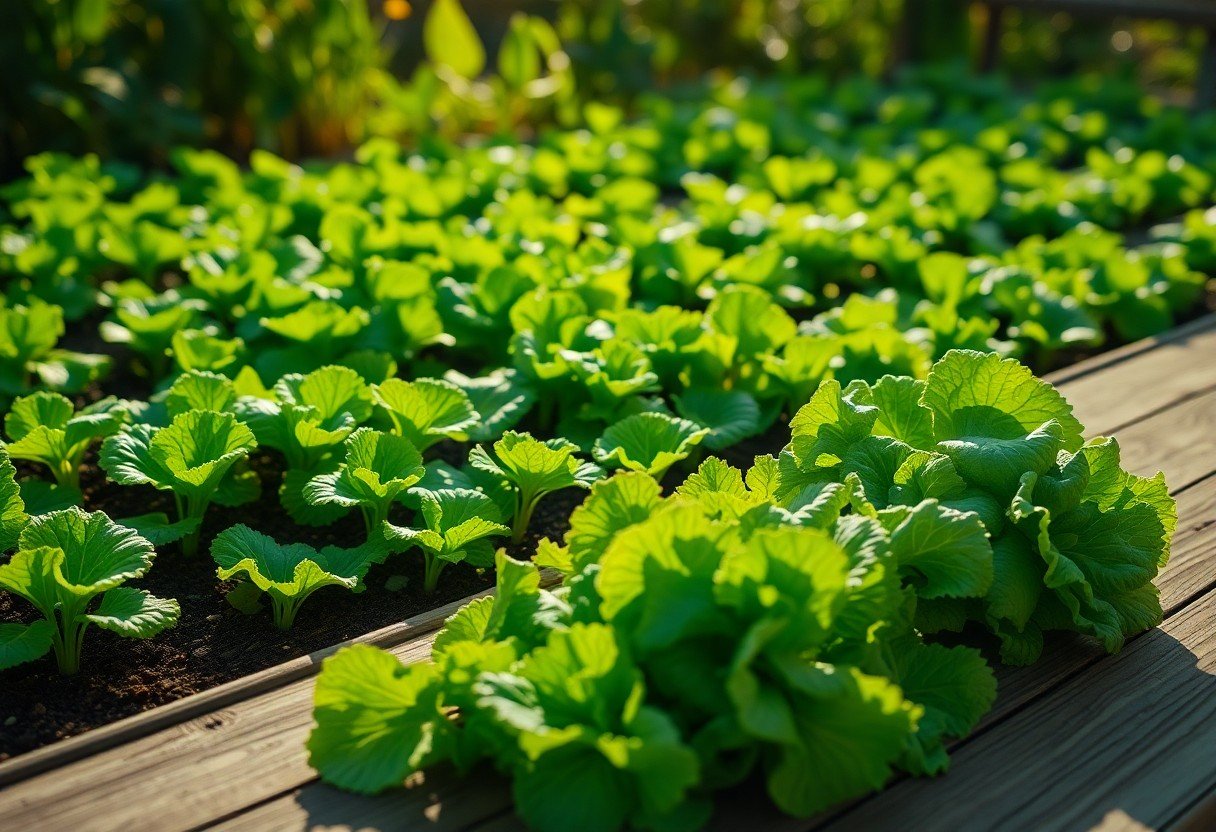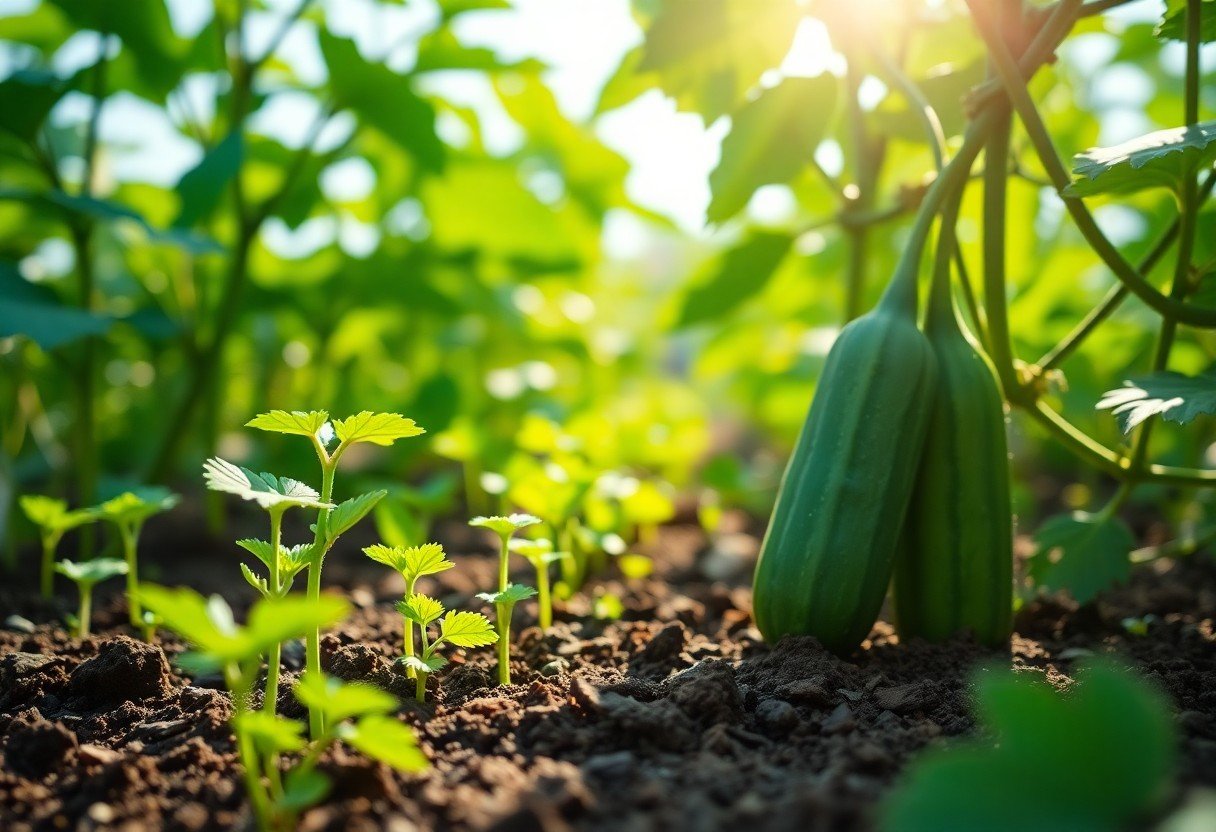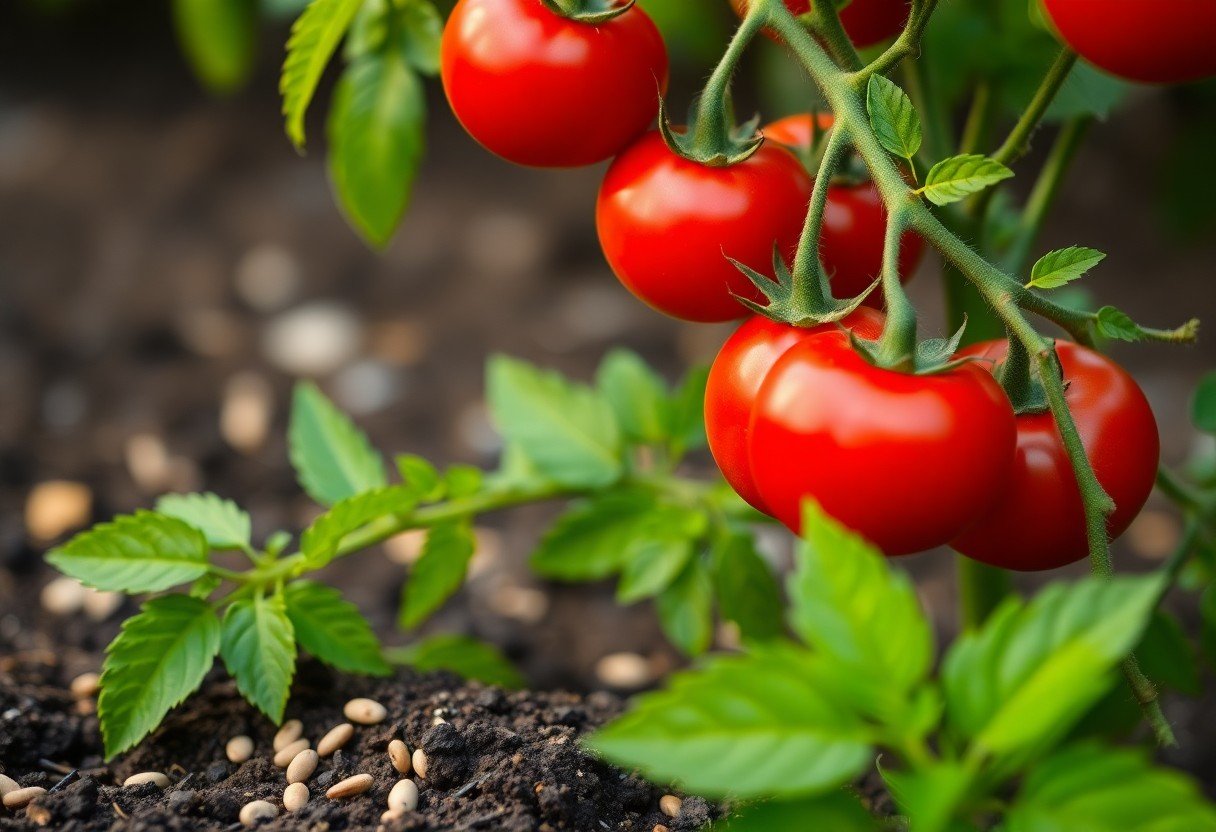Harvest fresh, crunchy cabbage in just a few months with the right techniques! Growing early cabbage can be a rewarding experience, and with the proper care and attention, you can achieve a bountiful yield that’s both quick and delicious. In this guide, you’ll discover imperative tips on soil preparation, optimal planting times, and maintenance strategies that will ensure your cabbage thrive. Let’s dig in and unlock the secrets to growing marvelous early cabbage that your family will enjoy!

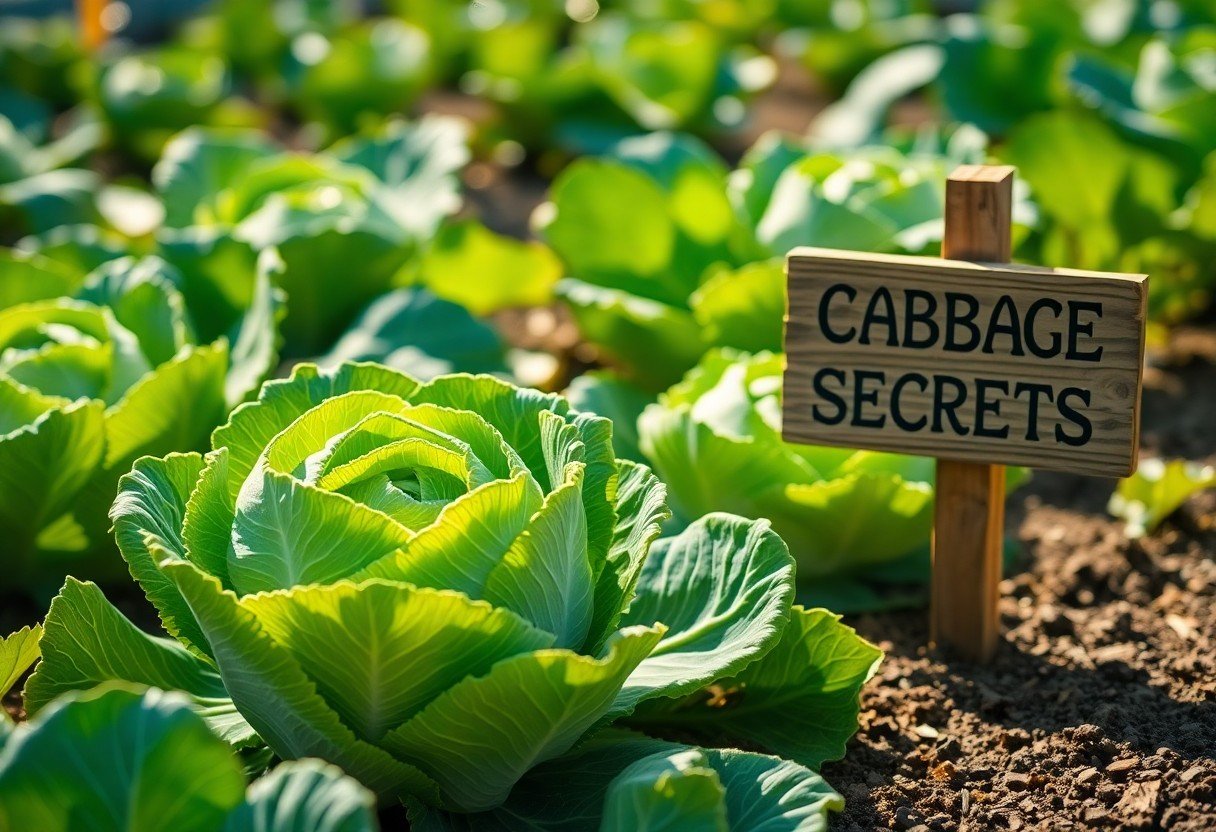
Understanding Cabbage Varieties
Your choice of cabbage variety significantly impacts your gardening success. There are numerous types of cabbages available, each with their own growing requirements, maturation times, and flavors. By familiarizing yourself with these varieties, you can make informed decisions that will yield delicious and bountiful harvests. Early maturing varieties, such as ‘Fast Vantage’ or ‘Ruby Ball’, can provide you with produce in a matter of weeks, making them ideal for gardeners eager to see results quickly.
Choosing Quick-Growing Varieties
Quick-growing cabbage varieties allow you to enjoy an early harvest, often within 55 to 70 days of planting. These varieties are especially beneficial for gardeners with shorter growing seasons or those looking to maximize yield in limited timeframes. When dicking out quick-growing options, consider factors such as your local climate and the time of year, ensuring that you give your cabbages the ideal conditions for growth.
Determining Flavor Profiles
While the texture and crunch of cabbage are important, the flavor profile is what truly brings your dishes to life. Varieties such as ‘Savoy’ offer a sweeter, milder taste, while ‘Napa’ boasts a tender and juicy texture with a subtle, earthy flavor. If you enjoy a more robust and tangy bite, opt for varieties like ‘Green’ or ‘Red’ cabbages, which add a delightful punch to salads and slaws. Assessing the flavors you enjoy in your cuisine will help guide you towards the right type of cabbage for your garden.
Cabbage can taste quite different depending on the variety you choose to grow. For instance, the nutrient profile of ‘Savoy’ cabbage, which is known for its frilled, tender leaves, tends to be higher in vitamins and minerals than some other types. Meanwhile, ‘Green’ and ‘Red’ cabbages are versatile in their use across a variety of dishes, from coleslaws to stir-fries, in part due to their distinctively crunchy texture and strong flavors. Understanding these subtleties will not only enhance your gardening experience but also elevate your culinary creations.
Essential Growing Factors
Some of the most important aspects to consider when growing cabbage are soil quality, temperature, and sunlight. Addressing these factors will lead to impressive and flavorful harvests. To ensure your cabbage thrives, pay attention to the following:
- Soil Preparation
- Soil Quality
- Temperature Regulation
- Sunlight Exposure
Thou should always strive for the best growing conditions possible.
Soil Preparation and Quality
While the nutritional value of your soil plays a significant role in how well your cabbage will grow, appropriate preparation is equally important. Start by testing your soil’s pH level, aiming for a range between 6.0 and 6.8 for optimal growth. Enrich your soil with organic matter such as compost or well-rotted manure, which enhances moisture retention and provides vital nutrients.
Additionally, ensure your soil is well-draining to prevent waterlogging, which can lead to root rot. You may want to mix in some perlite or sand if the soil is heavy clay. Regularly turning and aerating your soil will improve its structure and encourage healthy root development for your cabbage plants.
Ideal Temperature and Sunlight
Ideal temperatures for growing cabbage range from 60°F to 70°F (15°C to 21°C). Cabbage thrives in cooler weather, so planting early in the season will help you achieve a quicker harvest. Be aware to protect your young plants from any late frosts, as they can harm the tender seedlings.
Optimal Temperature and Sunlight Conditions
| Temperature | Sunlight |
|---|---|
| 60°F – 70°F (15°C – 21°C) | Full sun (at least 6-8 hours/day) |
| Avoid temperatures exceeding 80°F (27°C) | Partial shade can help in extremely hot climates |
Plus, keep in mind that cabbage benefits from consistent sunlight exposure to maintain healthy growth. Ensure your plants receive full sun for at least six to eight hours a day, especially during the vegetative growth phase. However, if you live in an area with intense heat, consider providing some afternoon shade to prevent stress on the plants.
Planting Techniques
Not all planting techniques are created equal; employing the right methods can significantly impact your early cabbage harvest. By mastering the subtleties of seed sowing and transplanting, you can ensure that your cabbage plants thrive and produce your desired quick and delicious yields. Each technique requires attention to detail and an understanding of your local climate conditions, soil type, and the specific requirements of your cabbage variety.
Seed Sowing Tips
Some vital tips for sowing your cabbage seeds include selecting the right time and ensuring proper soil preparation. Optimal planting occurs when the temperature is consistently above 60°F (15°C) in the spring. It’s also important to plant seeds in well-draining soil rich in organic matter to give your plants a healthy start. Here are some additional tips to consider:
- Space your seeds about 2 inches apart to allow ample room for growth.
- Cover the seeds lightly with soil, about half an inch deep.
- Water the area gently but thoroughly to encourage germination.
Perceiving the initial growth stages will help you identify any potential issues early on, allowing you to adjust your care routine accordingly.
Transplanting Success
Some key factors contribute to successful transplanting of established cabbage seedlings. Timing is everything; you should aim to transplant your seedlings when they have at least two to three true leaves, ensuring they are strong enough to adapt to their new environment. Preparing your garden bed in advance by loosening the soil and amending it with organic matter will create a welcoming space for your cabbage. Additionally, spacing your plants appropriately—around 18-24 inches apart—will promote healthy growth and airflow, reducing the risk of disease.
Planting your seedlings during cooler parts of the day, such as early morning or late afternoon, can help minimize transplant shock. Water your seedlings well before and after transplanting to help establish their roots in their new home. The key to successful transplanting lies in paying attention to your seedlings’ needs and adapting your care as they grow, ensuring your cabbage harvest remains on track for a delicious outcome.
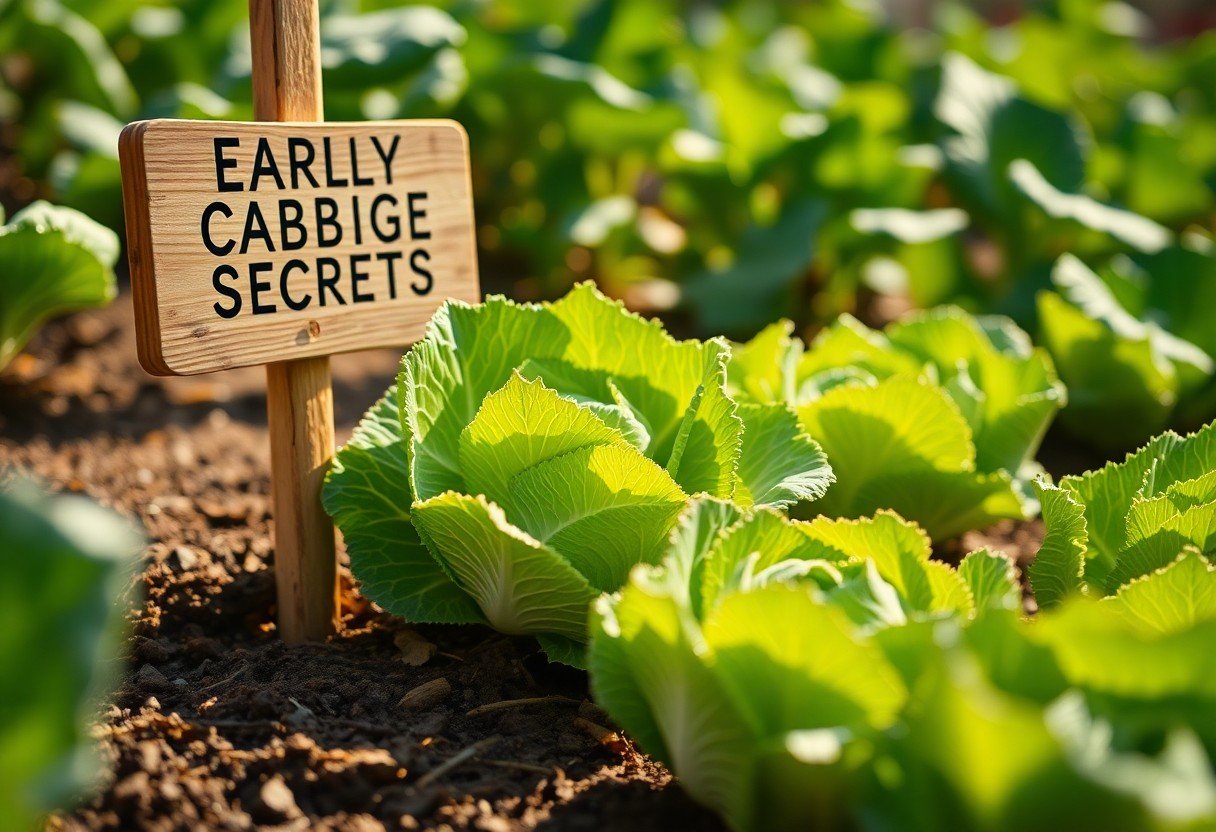
Watering and Nutrient Management
Despite the perception that cabbages require little attention, watering and nutrient management are vital for ensuring your plants thrive and deliver a bountiful harvest. Cabbages prefer consistently moist soil, but it’s equally important to avoid waterlogging, which can lead to root rot and other diseases. You should aim to keep the soil evenly moist, checking it regularly to monitor moisture levels. Implementing a consistent watering schedule, particularly during dry spells, will promote healthy growth and improve the overall resilience of your cabbage plants. Mulching around the base of your plants can also help retain moisture while suppressing weeds, making maintenance easier and more efficient.
Irrigation Best Practices
An effective irrigation strategy is necessary for optimal cabbage growth. You can use either drip irrigation or soaker hoses to deliver water directly to the root zone, minimizing waste and reducing evaporation. Water your plants deeply and less frequently instead of shallow daily watering; this encourages the roots to grow deeper, improving stability and moisture access. Early morning is the ideal time to water your cabbages, as it allows leaves to dry off during the day, reducing the risk of diseases linked to excess moisture on foliage.
Fertilization Techniques
Best practices for fertilizing cabbage include a balanced approach that ensures your plants receive all necessary nutrients. Before planting, it’s advisable to amend your soil with compost or a slow-release fertilizer that provides a steady supply of nutrients throughout the growing period. As your cabbages develop, you may want to apply a nitrogen-rich fertilizer, particularly during the early stages of growth, since cabbages are heavy feeders and thrive with ample nutrients. Take care to follow the recommended application rates, based on the products you use, to avoid nutrient burn that could jeopardize plant health.
It is also beneficial to conduct a soil test before planting, as this will give you insights into nutrient levels and pH balance, allowing you to tailor your fertilization plan specifically for your soil conditions. This personalized approach ensures your cabbages receive the right nutrients at the right time, leading to a quicker, more delicious harvest. Pay attention to the symptoms of nutrient deficiency, such as yellowing leaves or stunted growth; addressing these issues promptly can give your plants a health boost and improve the quality of your cabbage yield.
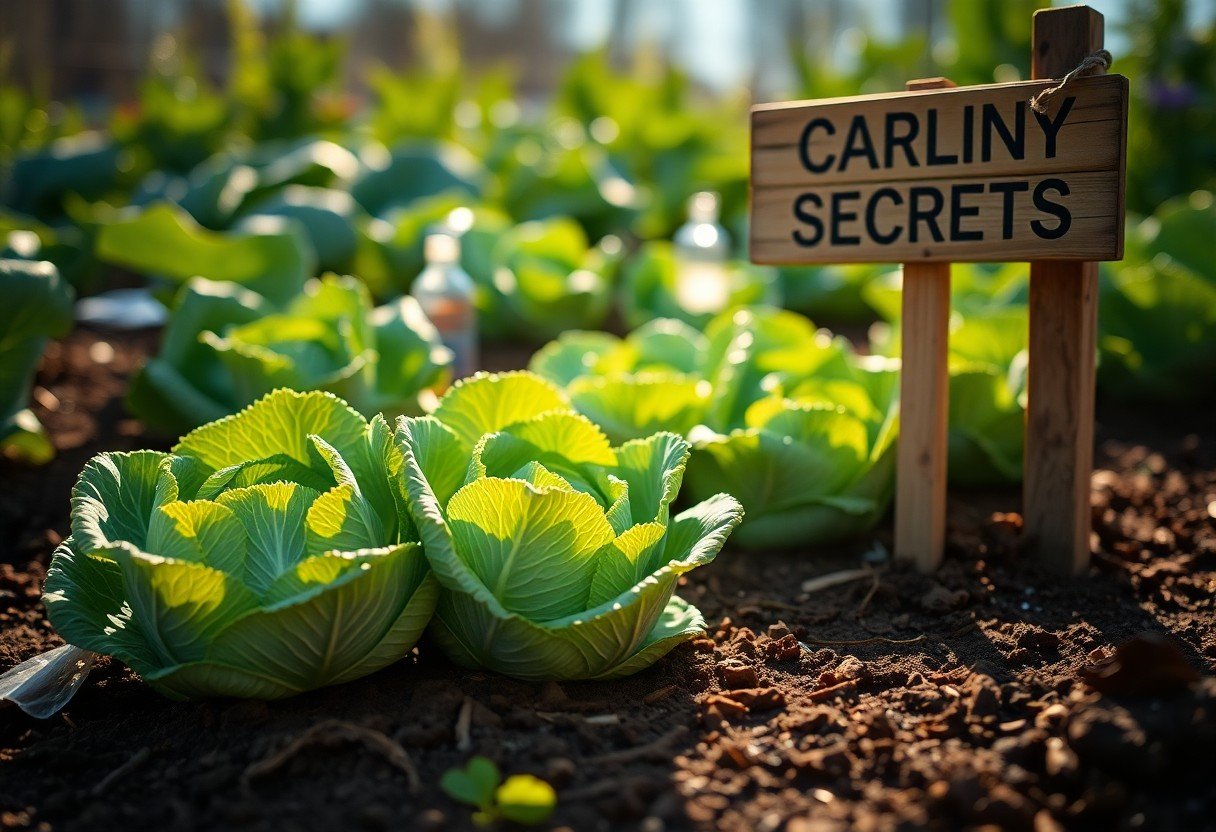
Pest and Disease Control
Unlike many other garden vegetables, cabbage is particularly susceptible to an array of pests and diseases that can severely impact your harvest. Effective pest and disease control in your cabbage garden is important not only for maintaining plant health but also for ensuring a bountiful yield. By staying informed and proactive, you can mitigate these threats and enjoy delicious, vibrant cabbages on your plate.
Identifying Common Pests
With a keen eye, you can spot common pests that are notorious for feasting on cabbage plants. Aphids, cabbage worms, and cutworms are some of the most frequent offenders. Aphids typically gather in clusters on the tender leaves, resulting in curled and yellowing foliage, while cabbage worms leave behind visible holes in the leaves. Cutworms can be even more disheartening, as they may sever young plants just above the soil line, often during the night. Early detection is your best line of defense against these pests, so inspect your plants regularly and familiarize yourself with the signs of an infestation.
Disease Prevention Strategies
Identifying diseases that may affect your cabbage, such as downy mildew or black rot, is vital for maintaining a healthy crop. The first step in disease prevention is to plant disease-resistant varieties and ensure good air circulation around your plants. Implement crop rotation strategies each growing season, as this can disrupt the life cycles of pathogens that thrive in the soil. Additionally, avoid overhead watering, as wet foliage can create an ideal environment for fungal diseases to flourish.
For instance, using mulch can help to keep soil moisture levels stable while also providing a barrier against soil-borne diseases. Additionally, practicing sanitation—such as removing any plant debris or spent crops at the end of the growing season—can significantly reduce the risk of disease carryover to your next planting. By incorporating these strategies into your gardening routine, you can create a healthier environment for your cabbage and reduce the likelihood of both pests and diseases affecting your harvest.
Harvesting Strategies
Once again, timing is everything when it comes to harvesting your cabbage. Knowing the right moment to pick can lead to the best flavors and textures. Cabbage varieties have different growth cycles, so monitoring their development closely will help you achieve that peak harvest time. Harvesting too early can result in a disappointing culinary experience, while waiting too long can lead to overgrown, tough, or split heads. By employing the right strategies, you’ll ensure that your cabbage not only tastes great but also maintains its nutritional value.
Signs of Maturity
An crucial part of harvesting cabbage involves recognizing the signs of maturity. Look for heads that are firm to the touch and have reached a proper size for your selected variety—different types will vary in what “proper size” means. The outer leaves should be vibrant and healthy, with little to no yellowing. Another important signal is the tightness of the head itself; if you can easily squeeze it and feel a looseness, it may need more time in the ground.
Harvesting Techniques for Optimal Quality
Little attention to detail during the harvesting process can make a big difference in the quality of your cabbage. First, use a sharp knife or garden shears to cut the head off at the base, avoiding any damage to the plant itself. This ensures that the remaining leaves stay healthy and could enable a secondary harvest if your variety allows for it. Additionally, make sure to harvest your cabbage early in the morning or late in the afternoon to help preserve moisture, which can enhance the overall crispness of the cabbage.
Maturity is key when it comes to achieving the best flavor and texture in your cabbage. Picking heads that are at their peak allows you to enjoy a range of culinary experiences, from fresh salads to hearty soups. After harvesting, do not wash the cabbages immediately; instead, let them dry in a shaded area to prevent spoilage. Once dry, store them in a cool place to maintain freshness for as long as possible. Taking these extra steps in handling your harvest will ensure that every bite is as delicious as it should be.
Summing up
Summing up, growing early cabbage can become one of your garden’s most rewarding endeavors if you pay attention to the right techniques. By selecting suitable varieties, starting your seeds indoors, and providing optimal growing conditions such as adequate sunlight and water, you set the stage for quick and delicious harvests. Additionally, being mindful of soil health and implementing pest management strategies can further enhance your cabbage-growing experience.
As you launch on your journey with early cabbage, keep in mind the importance of timing and care. By utilizing your space efficiently and giving your plants the attention they deserve, you can look forward to enjoying fresh, home-grown cabbage over and over again. With the right approach and a bit of patience, your gardening efforts will yield not just vegetables but also a deeper connection with the fruits of your labor.


